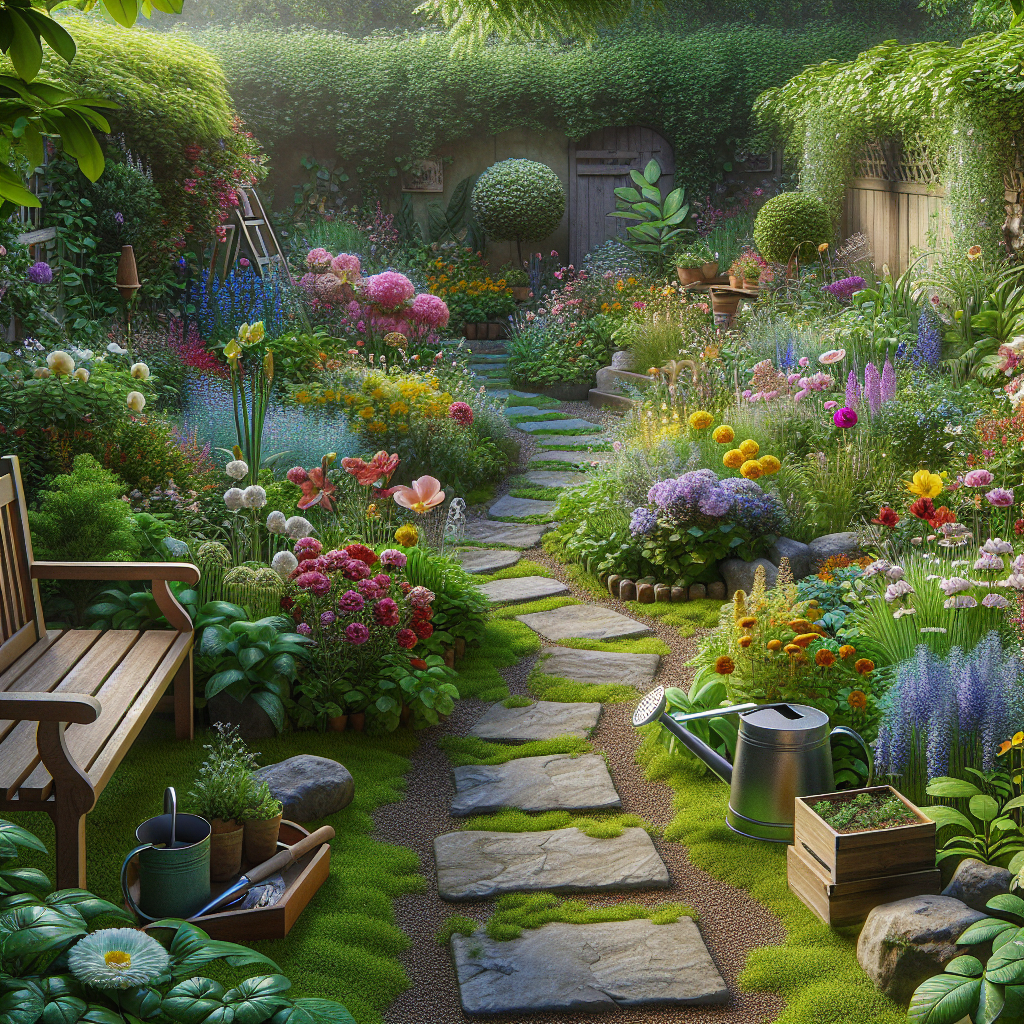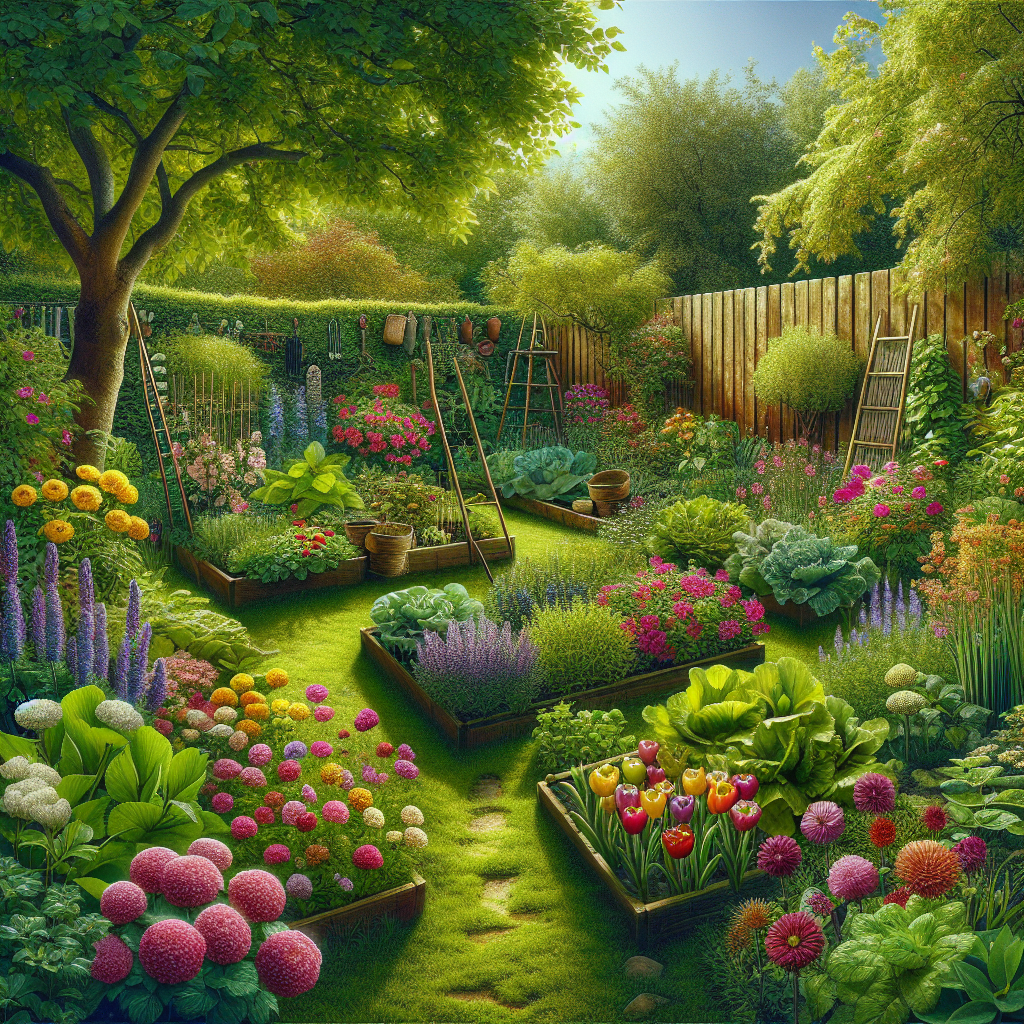Gardening is a delightful and rewarding hobby, but it can sometimes feel overwhelming, especially for beginners. That’s where *backyard gardening hacks* come into play! These clever tips and tricks can make your gardening experience more efficient, enjoyable, and productive. Whether you have a sprawling backyard or a modest patio garden, there are numerous hacks that can help you maximize your space and yield.
In this article, we will delve into some essential *backyard gardening hacks* that every gardener should know. From soil preparation and pest control to innovative planting techniques, we’ve got you covered. By implementing these hacks, you’ll not only save time and effort but also ensure that your garden thrives. So, grab your gardening gloves and let’s get started!
Visit our website to learn more and get started today! Click here.
Choosing the Right Garden Location

Selecting the perfect location for your garden is crucial for its success. A well-chosen spot can make a significant difference in the health and productivity of your plants. When deciding on the location, consider the following factors:
- Sunlight: Most vegetables and flowers require at least 6-8 hours of direct sunlight daily. Observe your backyard throughout the day to identify areas that receive the most sunlight.
- Soil Quality: Good soil is fundamental to a thriving garden. Conduct a soil test to determine its pH level and nutrient content. This will help you amend the soil appropriately, ensuring it’s fertile and well-draining.
- Water Access: Ensure your garden is near a water source. Consistent watering is essential, and having easy access to water will save you time and effort.
- Protection from Wind: Strong winds can damage plants and dry out the soil. Choose a location that offers some natural windbreaks, such as fences, shrubs, or trees.
- Proximity: Place your garden near your home for convenience. The closer it is, the more likely you are to tend to it regularly.
By carefully considering these factors, you’ll set a solid foundation for a productive and enjoyable gardening experience. Remember, the right location can lead to healthier plants, higher yields, and a more fulfilling gardening journey.
Maximizing Space with Vertical Gardening

One of the most effective backyard gardening hacks is to utilize vertical gardening techniques. This method not only maximizes the use of limited space but also adds an appealing visual element to your garden. Here are some tips to get started with vertical gardening:
- Trellises and Arbors: Install trellises or arbors to support climbing plants like cucumbers, beans, and tomatoes. These structures provide the necessary support for vines to grow upwards, freeing up ground space for other plants.
- Hanging Planters: Use hanging planters for herbs, strawberries, or small flowers. This method is perfect for patios or small yards and allows you to grow more plants without taking up valuable ground space.
- Wall-mounted Planters: Attach planters or pockets to walls or fences. You can grow a variety of plants in these, from leafy greens to colorful flowers. This not only saves space but can also transform a plain wall into a vibrant garden feature.
- Stacked Containers: Utilize stacked containers or tiered planters to grow multiple plants in a smaller footprint. This is particularly useful for herbs, lettuce, and other small crops.
- Vertical Hydroponics: For those interested in advanced techniques, vertical hydroponic systems allow you to grow plants without soil, using a nutrient-rich water solution. These systems can be highly productive and efficient.
By incorporating vertical gardening into your backyard, you can make the most of your available space and create a lush, productive garden. This approach is especially beneficial for urban gardeners or those with limited land, allowing you to grow more in less space.
Effective Watering Techniques

Watering your garden efficiently is crucial for both plant health and resource conservation. Here are some effective watering techniques to ensure your backyard garden thrives:
- Deep Watering: Instead of frequent shallow watering, aim for deep watering sessions. This encourages roots to grow deeper into the soil, making plants more resilient to drought conditions. Water thoroughly but less often.
- Morning Watering: Water your plants early in the morning. This allows foliage to dry out during the day, reducing the risk of fungal diseases. Additionally, cooler morning temperatures mean less water is lost to evaporation.
- Drip Irrigation Systems: Install a drip irrigation system to deliver water directly to the plant roots. This method reduces water wastage and ensures that moisture reaches where it’s needed most. Drip systems can be easily customized to suit different plant types and garden layouts.
- Mulching: Apply a layer of organic mulch around your plants. Mulch helps retain soil moisture, suppresses weeds, and regulates soil temperature. Materials like straw, wood chips, or compost can be used effectively as mulch.
- Rainwater Harvesting: Collect rainwater using barrels or other containers. This eco-friendly practice not only conserves water but also provides your plants with natural, chlorine-free hydration. Use the collected rainwater to supplement your regular watering routine.
- Soil Moisture Monitoring: Use a soil moisture meter to check the moisture levels in your garden. This tool helps prevent overwatering or underwatering by giving you precise information about when your plants need water.
Implementing these watering techniques will help ensure your garden remains healthy and vibrant, while also making the best use of available water resources. Remember, consistent and proper watering is key to a thriving backyard garden.
Natural Pest Control Solutions

Maintaining a healthy garden often means dealing with unwanted pests. However, you don’t need to rely on harsh chemicals to keep these intruders at bay. Here are some natural pest control solutions to help protect your garden:
- Companion Planting: Certain plants can deter pests when grown together. For example, marigolds release a scent that repels many insects, and basil can keep mosquitoes and flies away. Strategically planting these companions can reduce the need for chemical interventions.
- Beneficial Insects: Encourage beneficial insects like ladybugs, lacewings, and predatory beetles in your garden. These natural predators feed on common pests such as aphids, mites, and caterpillars. Planting flowers like dill, fennel, and yarrow can attract these helpful insects.
- Neem Oil: This natural pesticide is derived from the neem tree and is effective against a variety of pests. It works by disrupting the life cycle of insects, preventing them from feeding and reproducing. Apply neem oil as a foliar spray to keep your plants pest-free.
- Diatomaceous Earth: This powdery substance is made from fossilized algae and can be sprinkled around plants to deter crawling insects. It works by damaging the exoskeleton of pests, leading to dehydration and death. Be sure to use food-grade diatomaceous earth for garden use.
- Homemade Sprays: Create your own pest control sprays using common household ingredients. A mixture of water, dish soap, and garlic or hot pepper can be an effective deterrent. Spray this solution directly onto plants to repel insects.
- Healthy Soil: Maintaining healthy soil is a proactive way to prevent pest infestations. Well-nourished plants are more resistant to pests and diseases. Regularly amend your soil with compost and organic matter to promote plant health.
By integrating these natural pest control methods, you can create a balanced ecosystem in your garden. Not only will this approach protect your plants, but it will also support the beneficial organisms that contribute to a thriving garden environment.
Composting Tips for Healthier Soil
Composting is a fantastic way to enrich your soil, reduce waste, and create a sustainable garden. Here are some essential composting tips to help you achieve healthier soil:
- Balance Green and Brown Materials: A successful compost pile needs a balance of green (nitrogen-rich) and brown (carbon-rich) materials. Greens include kitchen scraps, grass clippings, and coffee grounds, while browns consist of leaves, straw, and cardboard. Aim for a ratio of about three parts brown to one part green.
- Chop and Shred: Breaking down materials into smaller pieces accelerates the composting process. Chop up larger items like branches and vegetable scraps to help them decompose more quickly and evenly.
- Maintain Moisture: Your compost pile should be kept moist but not soggy. Think of a damp sponge—if you squeeze it and water drips out, it’s too wet. If it’s dry to the touch, it needs more water. Regularly check the moisture level and adjust accordingly.
- Aerate Regularly: Turning your compost pile helps to introduce oxygen, which is crucial for the decomposition process. Use a pitchfork or compost aerator to turn the pile every few weeks. This will also help to distribute moisture and heat evenly.
- Avoid Composting Certain Items: Some materials can attract pests or slow down the composting process. Avoid adding meat, dairy, oils, and diseased plants to your compost. Stick to plant-based kitchen scraps and yard waste for the best results.
- Use Compost Properly: Once your compost has turned into dark, crumbly humus, it’s ready to use. Mix it into garden beds, use it as a top dressing for lawns, or create a nutrient-rich potting mix. This will significantly enhance the health and fertility of your soil.
By following these composting tips, you’ll be well on your way to creating rich, fertile soil that supports a thriving garden. Visit our website to learn more and get started today! Click here.
Subscribe to our newsletter to get information delivered to your inbox on homesteading, growing food, food preparation, travel, fishing, and more.











